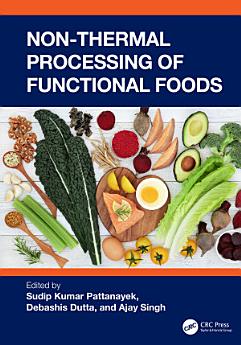Non-Thermal Processing of Functional Foods
Over dit e-boek
Usually, the added ingredients are classified as nutrients, dietary fiber, phytochemicals, other substances, or probiotics. The production, storage, and consumer consumption of these functional foods require special attention to preserve quality attributes. The production process of these foods can be classified as conventionally used thermal processing methods and non-thermal alternatives. In addition, these processes may be combined with biological approaches involving enzymatic treatment and fermentation. The various non-thermal processes, such as ultrasounds, high-hydrostatic pressure, vacuum impregnation, high-voltage electrical discharge, cold plasma, pulsed light, ozonation, etc., can be utilized for a product to sustain/preserve quality attributes of the ingredients, long shelf life, and sensory qualities.
This book compiles the latest non-thermal processing technologies to develop functional foods. The book discusses bioactivity, bioaccessibility, and bioavailability related to nutrition and functional food ingredients. It has 16 articles on different aspects of non-thermal processing technologies. Chapter 1 has discussed a general overview of emerging technologies, and various non-thermal processing techniques are discussed in Chapters 2–6, 8–9, and 12. Chapters 7, 11, 13, 15, and 16 discuss food safety and preservation. We have discussed the functional foods and bioactive compounds in Chapters 10 and 14.
A few of these reviews discuss the impact of developing non-thermal technologies on several food components (proteins, carbohydrates, lipids, minerals, vitamins, polyphenols, glucosinolates, fragrance compounds, and enzymes) while maintaining the structure and functional properties.
This book is an excellent source of information for professionals, postgraduate students, and researchers in food sciences and chemical engineering.
Over de auteur
Sudip Kumar Pattanayek is Professor in the Department of Chemical Engineering, Indian Institute of Technology, Delhi (IITD), Hauz Khas, New Delhi, India.
Debashis Dutta is Lecturer in the Department of Food Processing Technology, Mirmadan Mohanlal Government Polytechnic, Plassey, West Bengal, India.
Ajay Singh is Assistant Professor in the Department of Food Technology, Mata Gujri College, Fatehgarh Sahib, Punjab, India.








